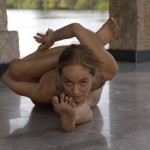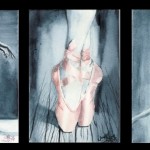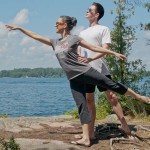It’s called petit allegro – the swift and agile footwork that enables ballerinas to dodge falling debris during a hurricane.
Ignoring Mayor Bloomberg’s order to stay indoors and watch SYTYCD reruns this weekend, Becky, visiting from England, decides not to let a little hurricane spoil her trip to New York. Leaping over a fallen tree branch, she finishes in an arabesque à terre croisé derriére with arms in 2nd arabesque.
Fifth Avenue does not usually see such stylish port de bras and meticulous turn-out – certainly not during inclement weather.
The pose looks effortless though it is actually very hard work. The regal, upright carriage of the torso requires ample stretch in the front of the hip. The shoulders must be held square to the same direction as the hips, the line of the arms echoing the line of the extended leg, shoulder blades firmly pressed down to accentuate the length of the neck. The abs must be lengthened and lifted to support the lower back and all the ballerina’s weight must be balanced over her supporting leg – while the toes of the extended leg touch the ground in the à terre position, they bear no weight.
It’s important for your balance, and for the aesthetics of the line, to maintain equal turn-out in both legs, engaging the deep outward rotator (DOR) muscles.
An important barre exercise for developing these muscles are the ronds de jambe à terre, those half-circles that we trace painstakingly on the floor with our pointed foot. Valerie Grieg in Inside Ballet Technique explains vividly how this works: “the circular movement of the leg rotates the head of the femur in its socket, which in turn goes to work on the ligaments and muscles around the hip, stretching them infinitesimally with the persistence of water dripping on a stone.”





Oh, I love it !
Creation amongst the destruction 🙂
=thorick